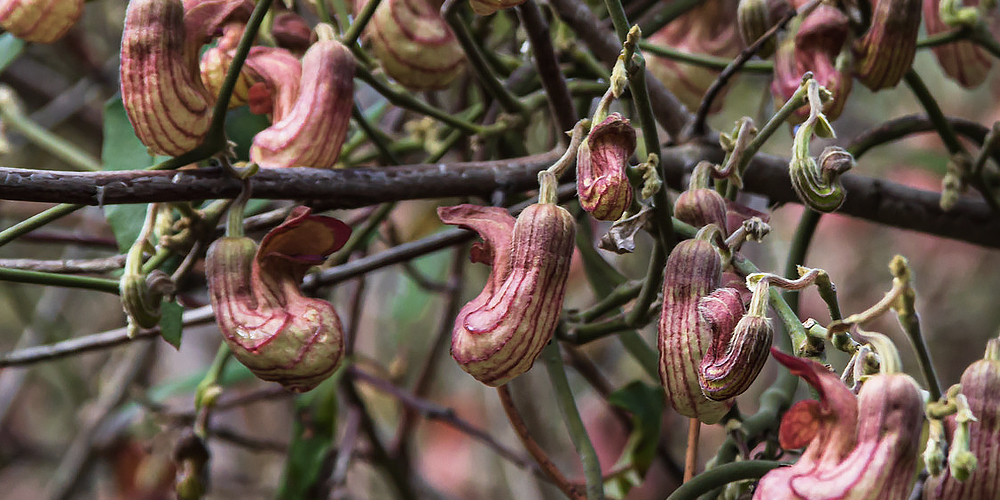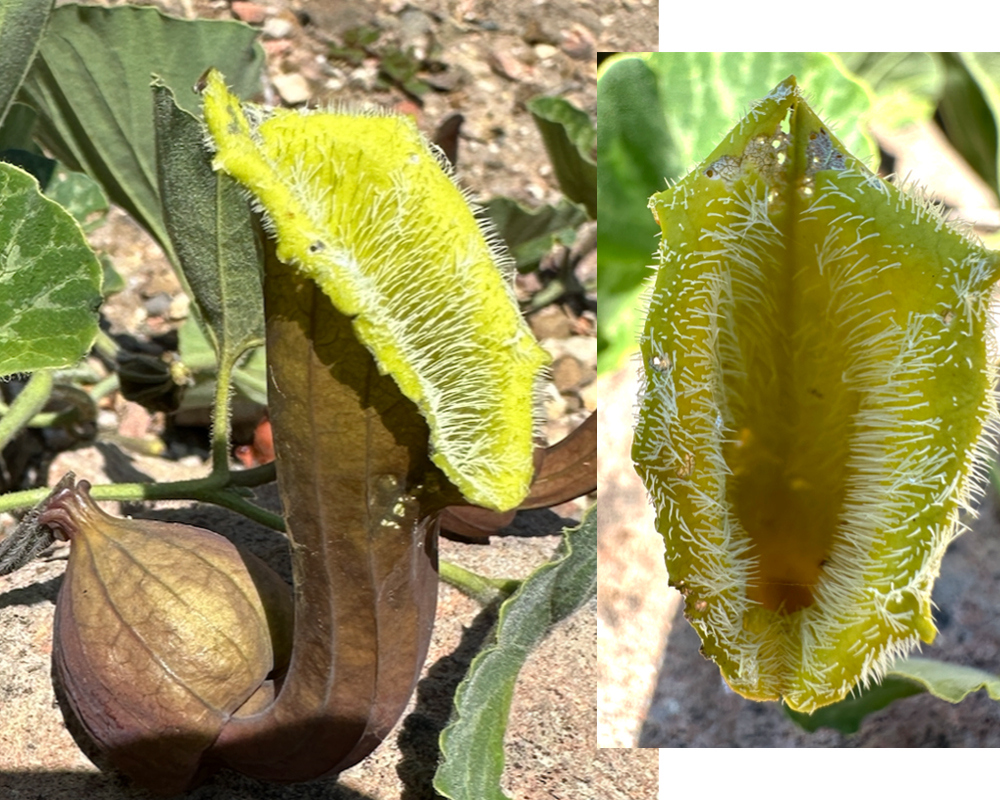
Aristolochia Pollination
Garden Director Lew Feldman
Aristolochia californica (pictured above), is surely one of the most captivating native California plants, with a flower aptly described by the common names “pipevine” or “Dutchman’s pipe.”
The UC Botanical Garden has over 10 species in the genus Aristolochia, which is estimated to be comprised, worldwide, of at least 300 distinct species. Aristolochia occurs in diverse habitats throughout much of the world, including in the Atacama Desert of Chile, one of the driest environments on Earth, where Aristolochia chilensis is endemic. Here in the Garden A. chilensis is found in the South American Area, just below the Garden of Old Roses and in three other locations, growing as a perennial vine that reaches up to a meter in length and bears yellow flowers. In Chile this species is known locally as oreja de zorro (fox ears) on account of the many downward pointing hairs that cover the lip and inside of the flower.

Aristolochia chilensis in the South American Area of the Garden. Note the downward-pointing hairs
The A. chilensis flower is reported to have a “fetid odor,” smelling of carrion or dung, which attracts fly pollinators, though I have not personally detected such an odor from the Botanical Garden plants. Nevertheless, the plants apparently do attract pollinators since here at the UCBG fruits and seeds develop from these flowers. As with most species of Aristolochia, pollination requires that the flower trap, and imprison for a time, the pollinator. In A. chilensis pollinators enter the flower through the open end of a floral tube that is lined with downward pointing hairs which prevent the insect from exiting the flower.
For successful pollination to occur, the trapped insect needs to be carrying pollen of the same Aristolochia species, which is then transferred to the receptive female portion of the flower, the stigma. At this point the trapped pollinator has served its purpose for the flower in which it is confined. But the insect’s job is not yet over; the flower, having been pollinated, is now ready to make its own pollen to transfer to the imprisoned pollinator. This usually occurs within a specific window of time, during which the pollinator has no access to nutrients and therefore risks dying. To preclude the death of the pollinator, the flower has evolved to make its own pollen in a timely manner; once the pollen is made, and the insect is (presumably) covered with it, the floral tube wilts and the hairs reorient so that they are no longer impeding the pollinator’s exit. And so the pollinator is allowed to escape and repeat the cycle in another A. chilensis flower.
Banner: Aristolochia californica by Sandy Steinman